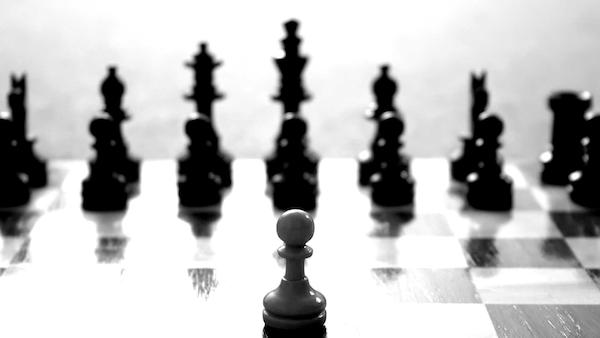Organizations of the Future - Part 3 - Scenario Planning for the Restaurant of the Future

In part 1 we defined Digital Darwinism and the Coefficient of Adaptability , and in part 2 we discussed the MTP . Now let’s deep dive into scenario planning.
Scenario Planning
Scenario Planning is the process of anticipating possible futures by generating actionable insights through the creation a small set of scenarios for an organization’s future environment that are:
- Relevant to critical business decisions
- Distinct
- Individually realistic and believable
- Together cover the breadth of relevant uncertainties Scenarios are visions of alternative plausible futures.
Environmental Scanning Framework
The process typically start with an environmental scan, assessing macro and micro forces. A good approach is to use the PEST(EL) framework. PEST(EL) stands for assessing Political, Economic, Sociological, Technological, and optionally Environmental, and Legislative trends.
Exponential Technology Trends
Technology especially, is driving a massive amount of disruption to every single industry and vertical. I recommend highly paying attention to the following 9 trends riding the Moore’s law of exponential growth:
- Infinite Computing
- Sensor & Network
- Robotics & Drones
- Additive Manufacturing / 3d Printing
- Nanotechnology & Synthetic Biology
- Artificial Intelligence
The New Entrants Game
One of the ways I’ve managed to have this conversation with senior executives is to have them envision the plausible future. It has to be credible with a clear understanding of how we get there from the current state, and covering most commercial aspects such as customer needs, organizational capabilities, and competitive landscape.
A fun way to have this conversation without all the pre-work is substituting scenarios with new competitors, and assessing how we plan to compete.
First thing to do is aligning in a horizon - typical horizons are 3-5, 5-7, or 7-10 years. I find that 3 years is too short, especially for transformational change; 10 years is too far, many execs won’t even be in position or working in 10 years. 7 years is the magic point, where it’s not too close, not too far, and a lot happens in that timeframe. 7 years is a good timeframe for a large traditional company to upgrade legacy infrastructure, evolve organizational structure, launch a new product, enter a new market, or achieve most long-term goals; however in order to achieve these long-term goals, a company needs a clear vision, strategy, and organizational readiness in terms of structure, design, operations, autonomy, and decision making.
Once you align on a horizon, now it’s time to frame the game. Imagine a short-term future, 7 year horizon, where our company faces 5 new industry competitors; each competitor has a specific strategy and competitive advantage, and our company has limited resources and can’t compete in every category. Where do we want to play, and how do we want to win?
5 New entrants:
- Speedy Business: It’s a quick-serve restaurant that can delivery the same type, quality, and taste food as today’s QSRs, but excels in speed, cost, and accuracy. This Speedy Business has an optimized supply chain, buys menu components in large volumes, and invested heavily in robotics, automation, replacing a large portion of human labor with high tech kitchens and fulfillment mechanisms, thus reducing time, cost, and error. Their competitive advantage: Speed and Cost.
- Immersive Experience Business: it’s a destination restaurant that can deliver the same food as other restaurants, but excels in immersive environments and technology. You can find there self-serve ordering kiosks and tablets, audio visual additives such as 3d projections and directional speakers, olfactory technology, augmented and virtual reality. You can immerse yourself in the food experience using each one of your senses, and it’s unique to every guest. Their competitive advantage: Experience Technology.
- Hospitality Business: Restaurant dedicated to people suffering from technology overload and needed a retreat. It’s themed with back-to-basics, focusing on people interaction, high touch personalized service. Their advantage: scalable human force, training, and people-centric culture.
- Better Food Business: A restaurant that can deliver food at the same cost and speed as others, but it’s healthier and tastier. This restaurant invested in understanding their customers through better data, such as Tricoders, DNA Sequencing, and Microbiome Analysis; and combined it with personalized food manufacturing using DNA editing such as CRISPR and Organic 3d Printing. All food will be produced just-in-time with the perfect combination of ingredients, vitamins, and even taste to suit individual preferences and body needs. Their advantage: Personalized, Healthier, and Tastier food.
- Food Everywhere: A restaurant that invested heavily in their distribution ecosystem, ranging from autonomous vehicles, drones, self-ordering vending machines, geo-distributed distribution centers, making it extremely accessible and convenient to get food any time, anywhere, fast. If you think about it, it’s not even a restaurant, but an organization whose goal is to feed people everywhere.
Restaurants must first define their purpose - is it to bring people together in a social environment? Is it to fulfill the human need of being fed? A clear purpose will help steer the strategy. Most disruptive competition will likely not come from the traditional industry, but exponential organizations that mastered how to scale supply and demand at low cost, matching untapped abundance with with evolving societal demands.
Now that we understand the plausible futures, new competitors, and external disruptive forces, in the next article let’s start building that business strategy and ensure we fit in the new society.